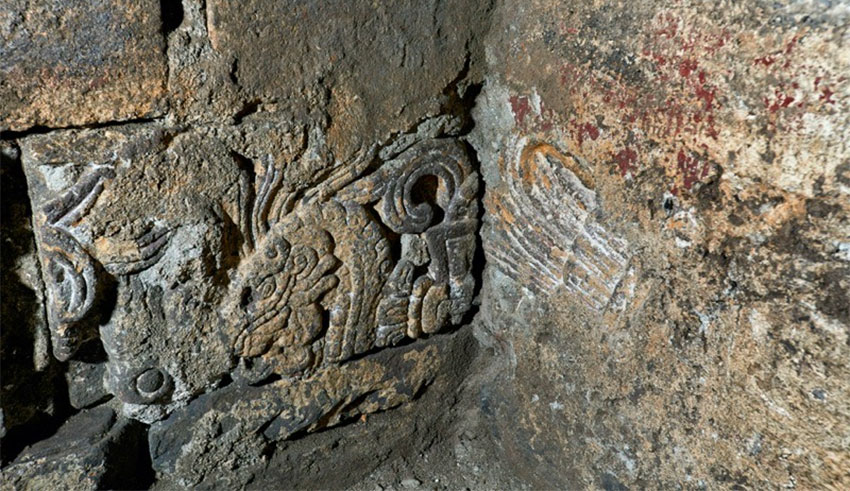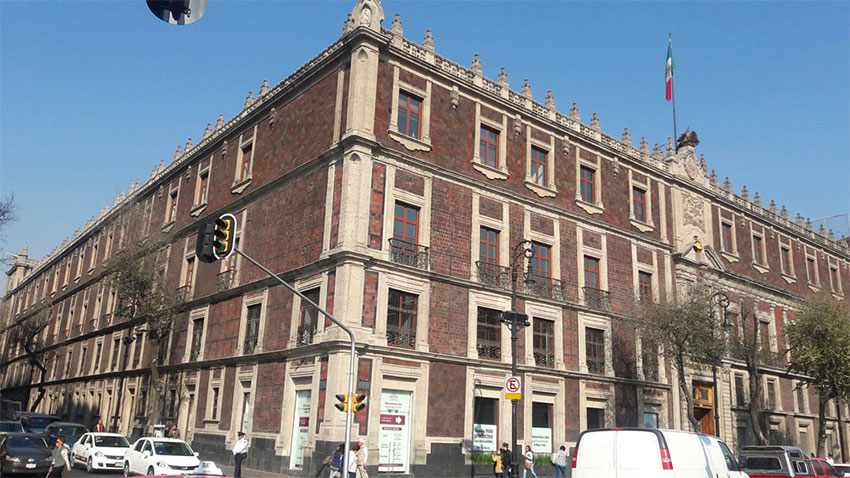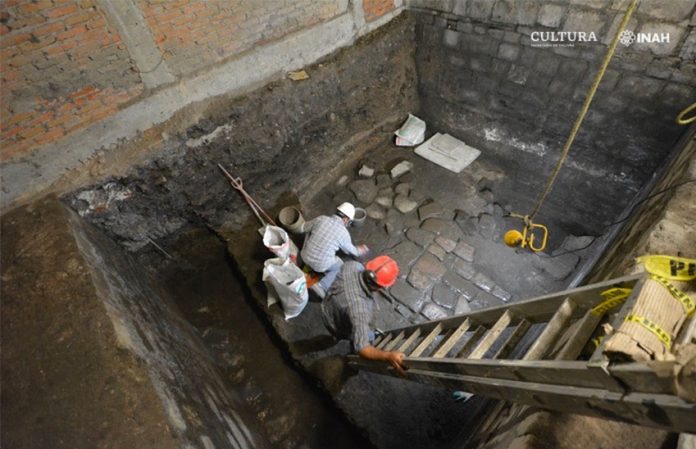Archaeologists in Mexico City have uncovered remains of a pre-Hispanic palace once occupied by several rulers of the Aztec capital of Tenochtitlán.
Specialists with the National Institute of Anthropology and History (INAH) found remains of the Palace of Axayácatl while excavating the courtyard and an adjacent room of the Nacional Monte de Piedad pawnshop, a stately 1755 building located a stone’s throw away from the Metropolitan Cathedral in the historic center of Mexico City.
During renovations of the building, INAH urban archaeologists found numerous basalt slabs that are believed to have been part of an open plaza of the palace occupied by Axayácatl, the sixth ruler or tlatoani of Tenochtitlán, and his successors.
Axayácatl, ruler of Tenochtitlán between 1469 and 1481, was the father of Moctezuma II and Cuitláhuac, who were the ninth and 10th rulers , respectively, of the Aztec, or Mexica, capital.
Moctezuma II is believed to have been killed on the balcony of his father’s palace in 1520, possibly by stone-throwing Spaniards.

He and other tlatoanis, including his brother Cuitlláhuac, were also held captive in the palace by Spanish conquistador Hernán Cortés and his men after their arrival in Tenochtitlán in 1519.
In a statement published on Monday, INAH said that in the same location archaeologists also found the remains of a house Cortés ordered to be built in the early 1520s and subsequently occupied.
Built using materials of the Palace of Axayácatl after it was razed, the home later became the first cabildo, or government house, of the colony of New Spain, INAH said.
Urban archaeologists were carrying out an archaeological salvage project at the Monte de Piedad building between September 2017 and August 2018 when they found the remains of both the palace and Cortés’ home, INAH said.
They first came across a room built from basalt and tezontle, two volcanic rocks commonly used in construction in Mexico. Further analyses concluded that the room was part of the house occupied by Cortés after the fall of Tenochtitlán in 1521.
Archaeologists concluded that the materials used to build the room came from the Palace of Axayácatl. Two of the stones used in the room’s construction were engraved with glyphs, including one of Quetzalcóatl, a feathered serpent deity worshipped by the Mexica people.

Archaeologists also found ceramic remains that dated back to both pre-Hispanic and early colonial times.
More than three meters below the floor of Cortés’ home, archaeologists Raúl Barrera and José María García found the remains of another floor built from basalt slabs that dated back to pre-Hispanic times.
“Given its characteristics, the specialists deduced that it was part of an open space in the former Palace of Axayácatl, probably a courtyard,” INAH said.
The institute said that the discovery of the palace remains beneath the pawnshop was not a surprise because “historical sources” guided the archaeologists to its location.
Archeologists are now endeavoring to learn more about both the Palace of Axayácatl and Cortés’ home in a “post-dig research phase,” INAH said.
Mexico News Daily
